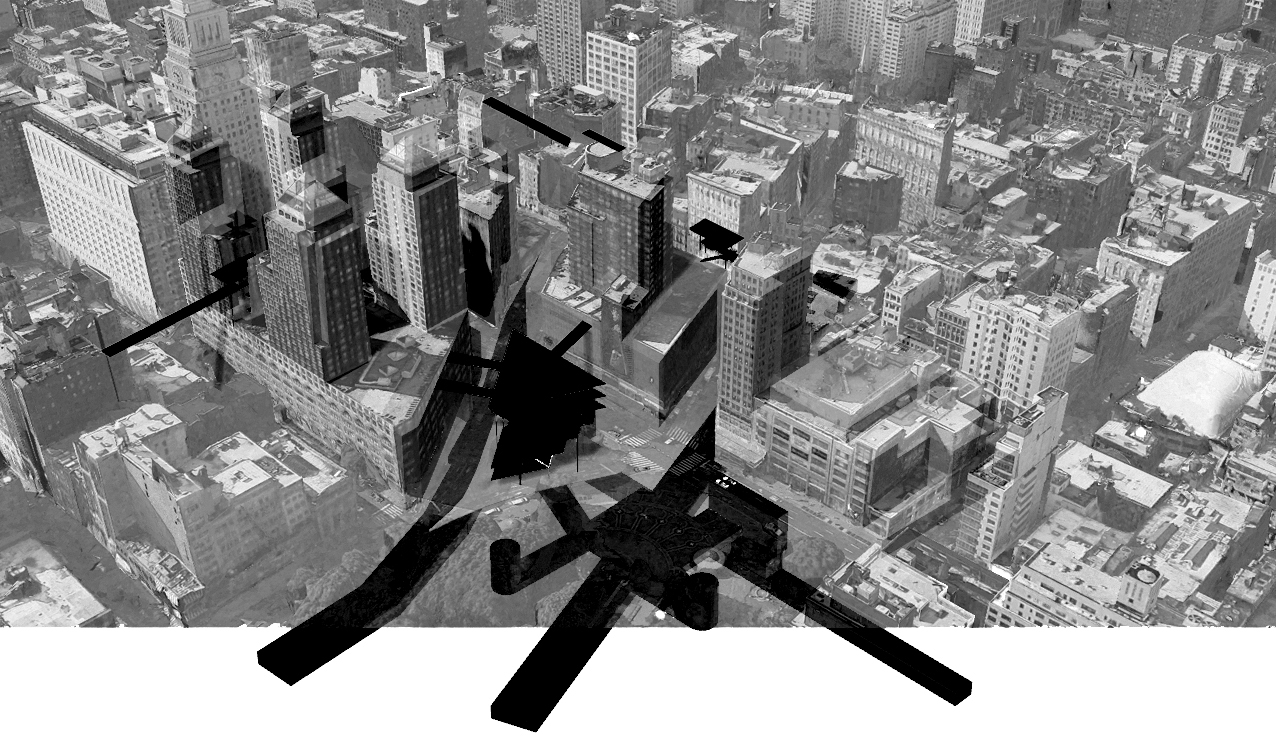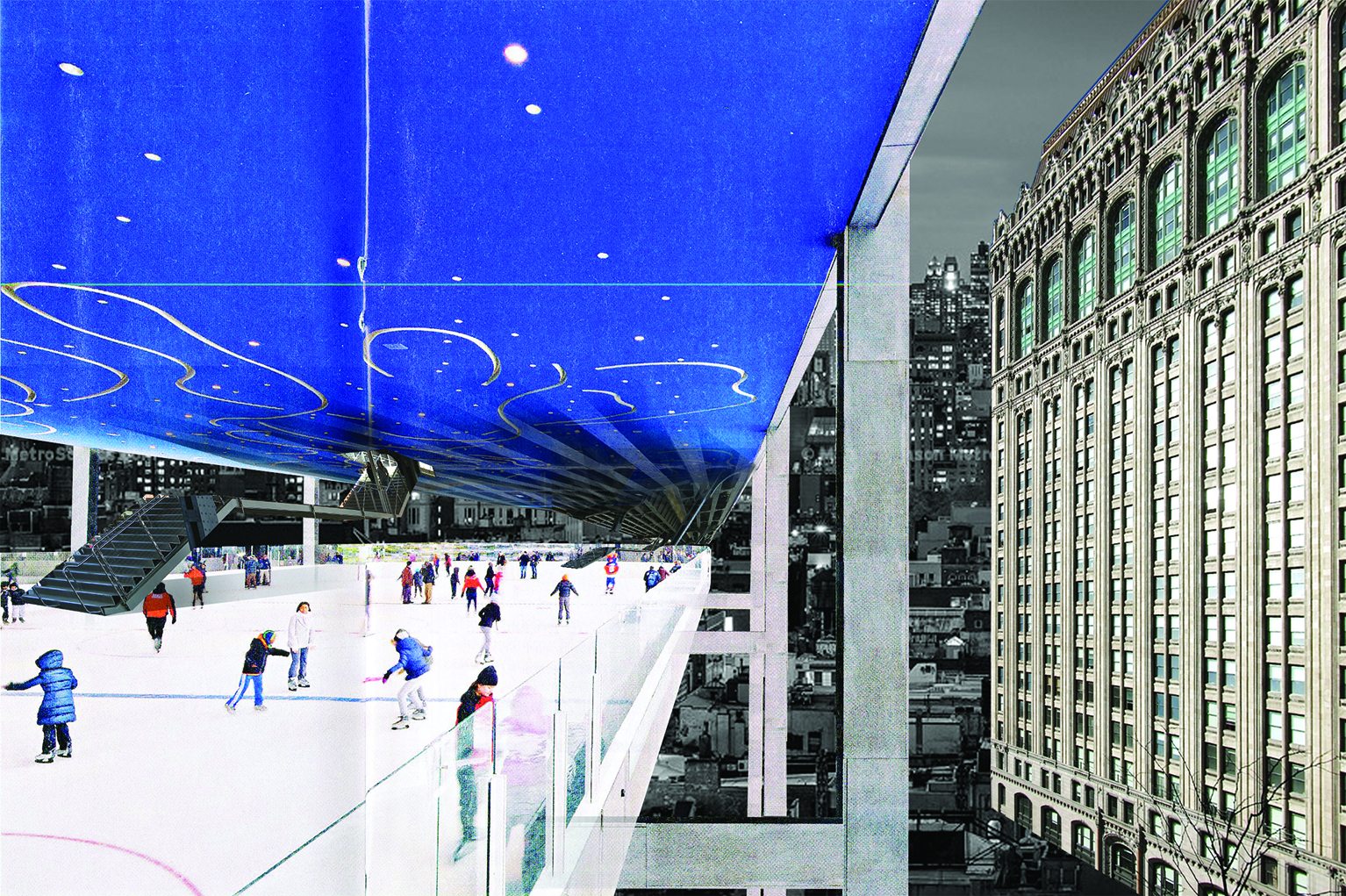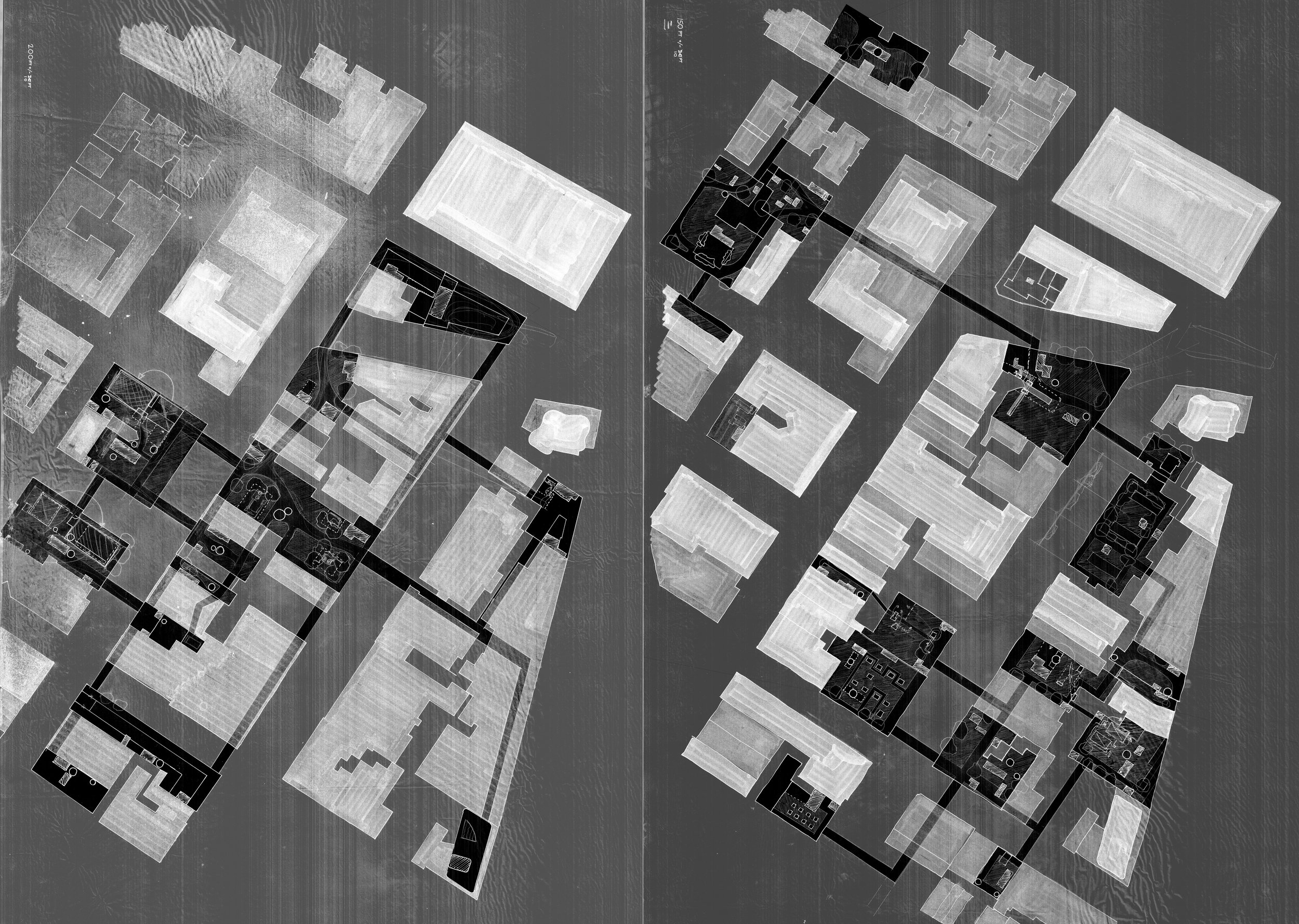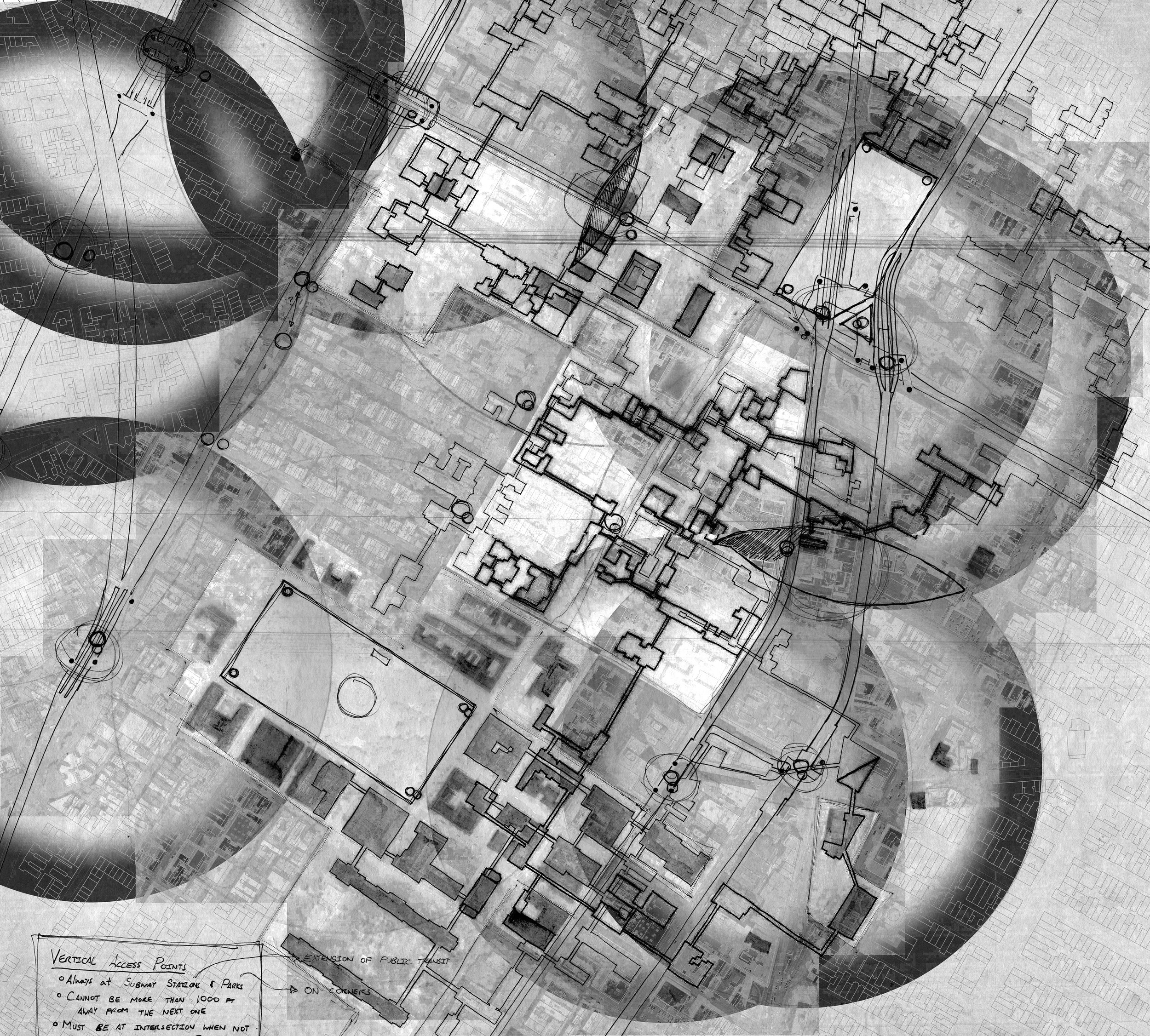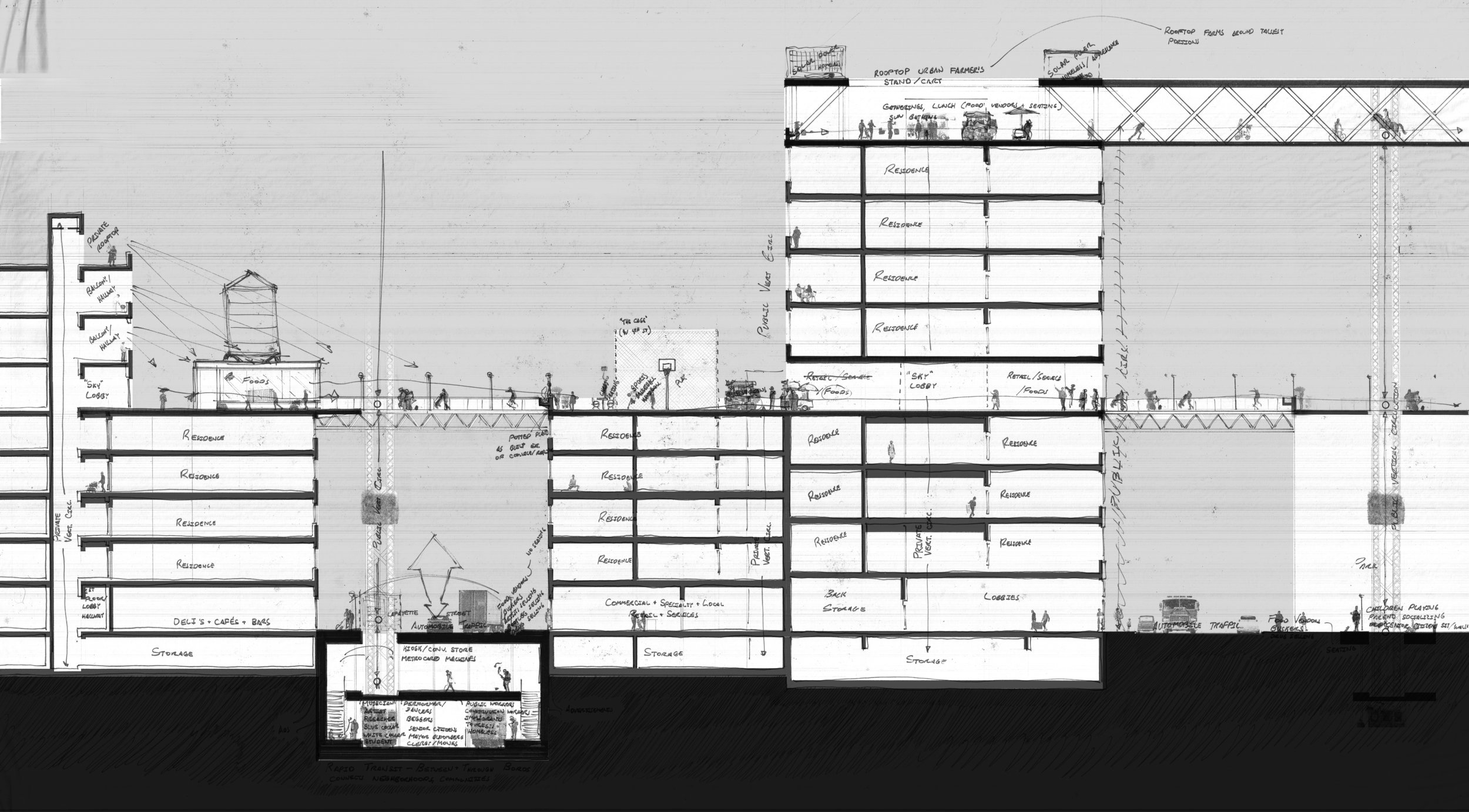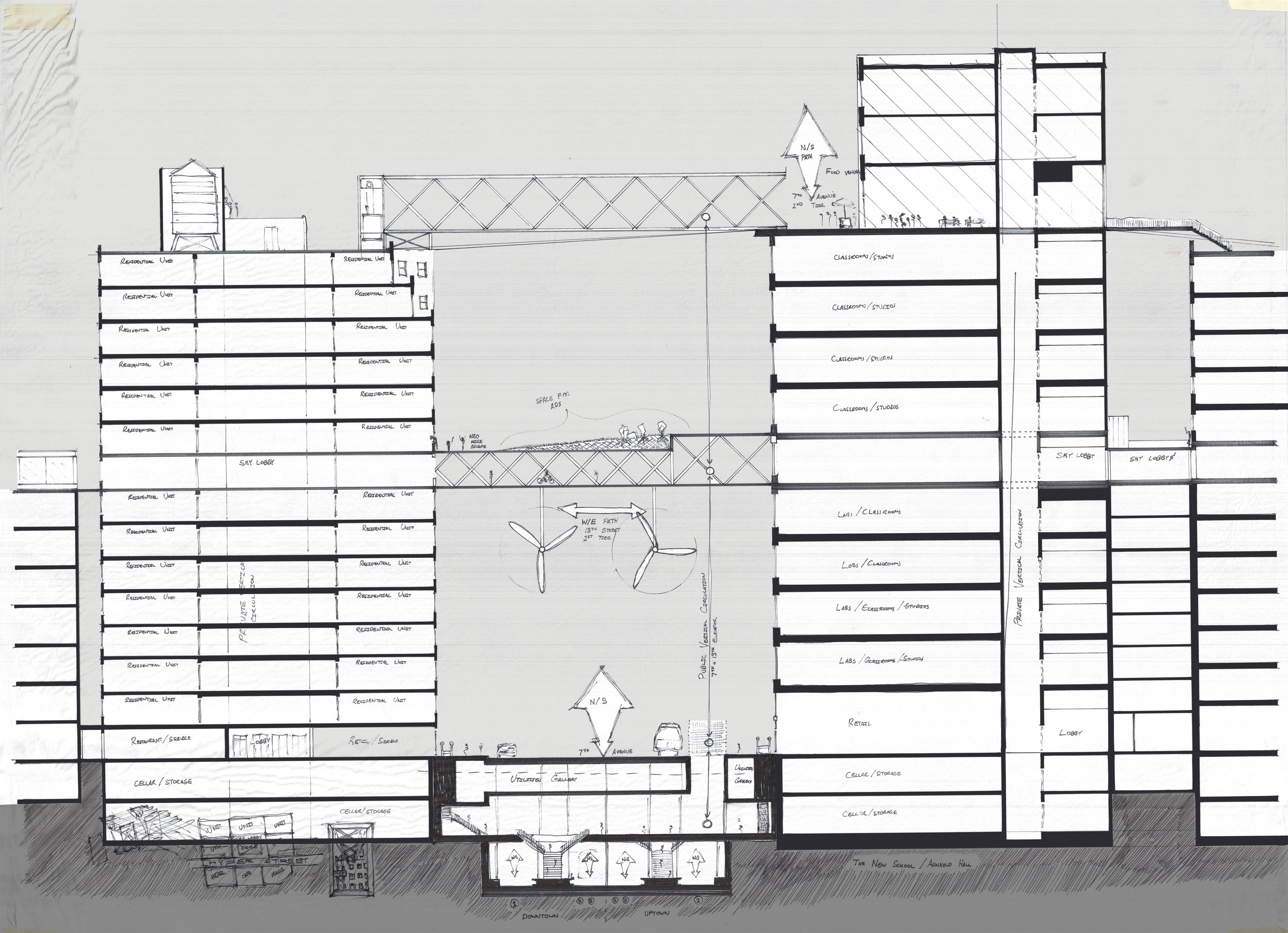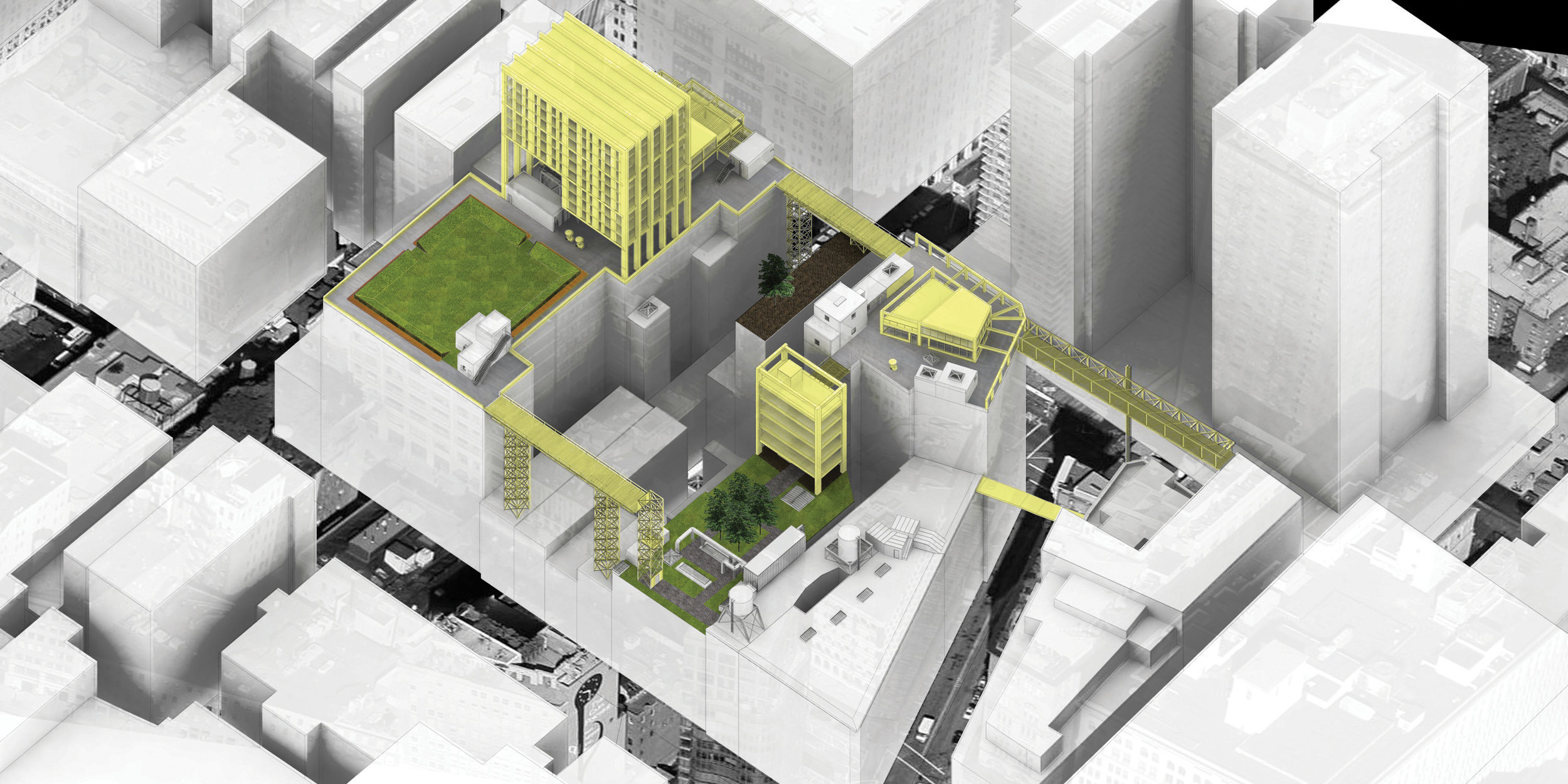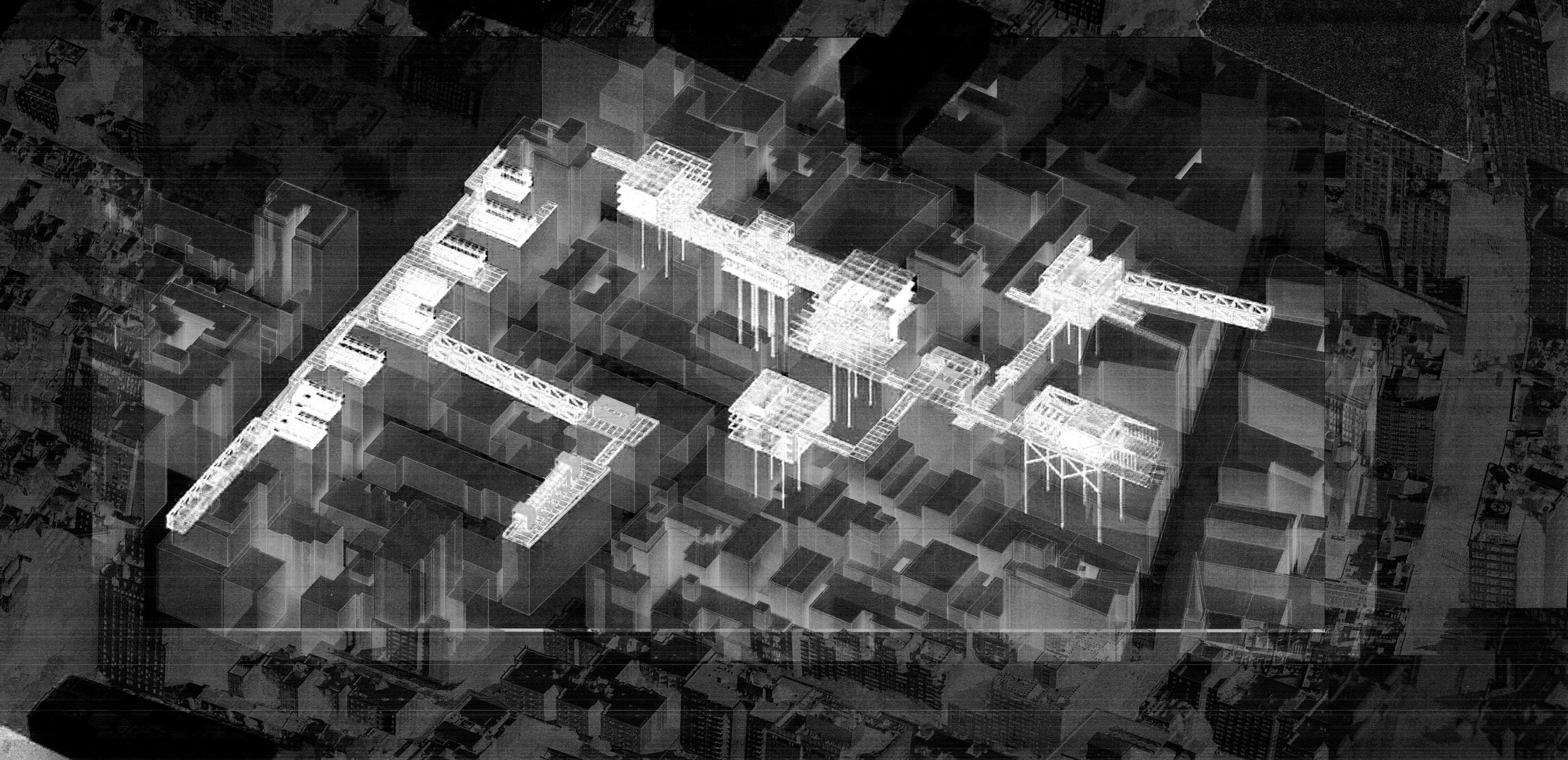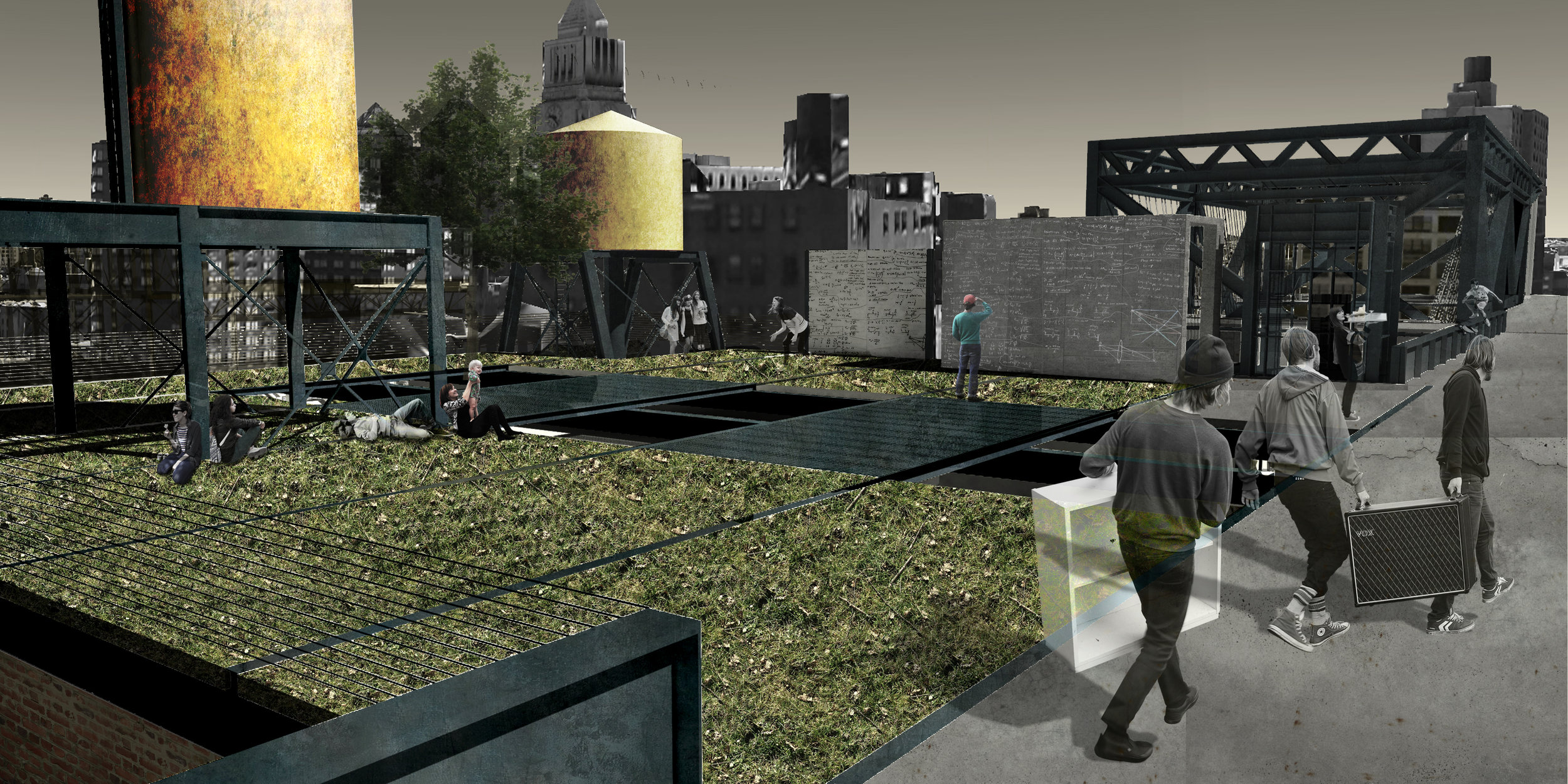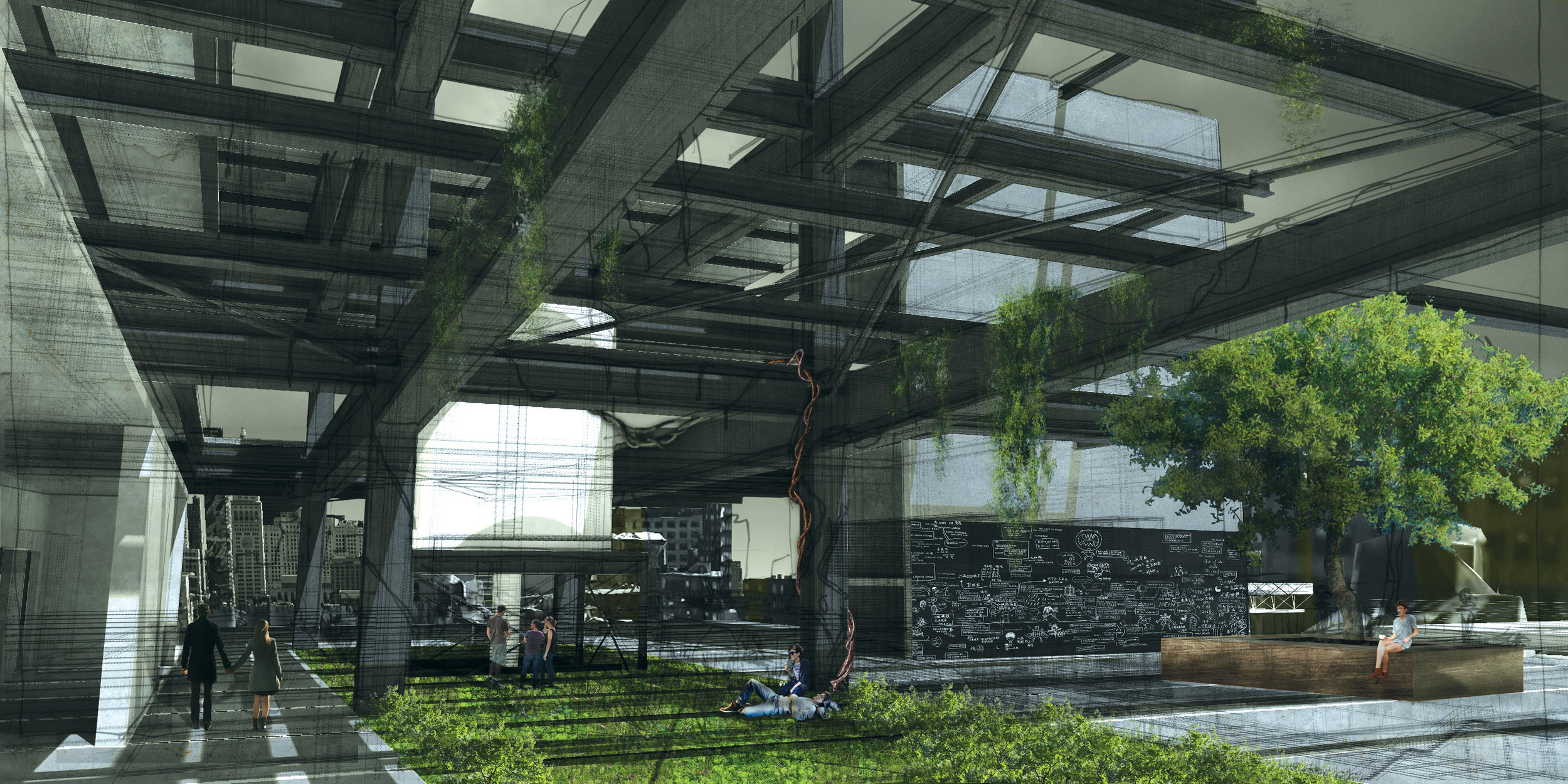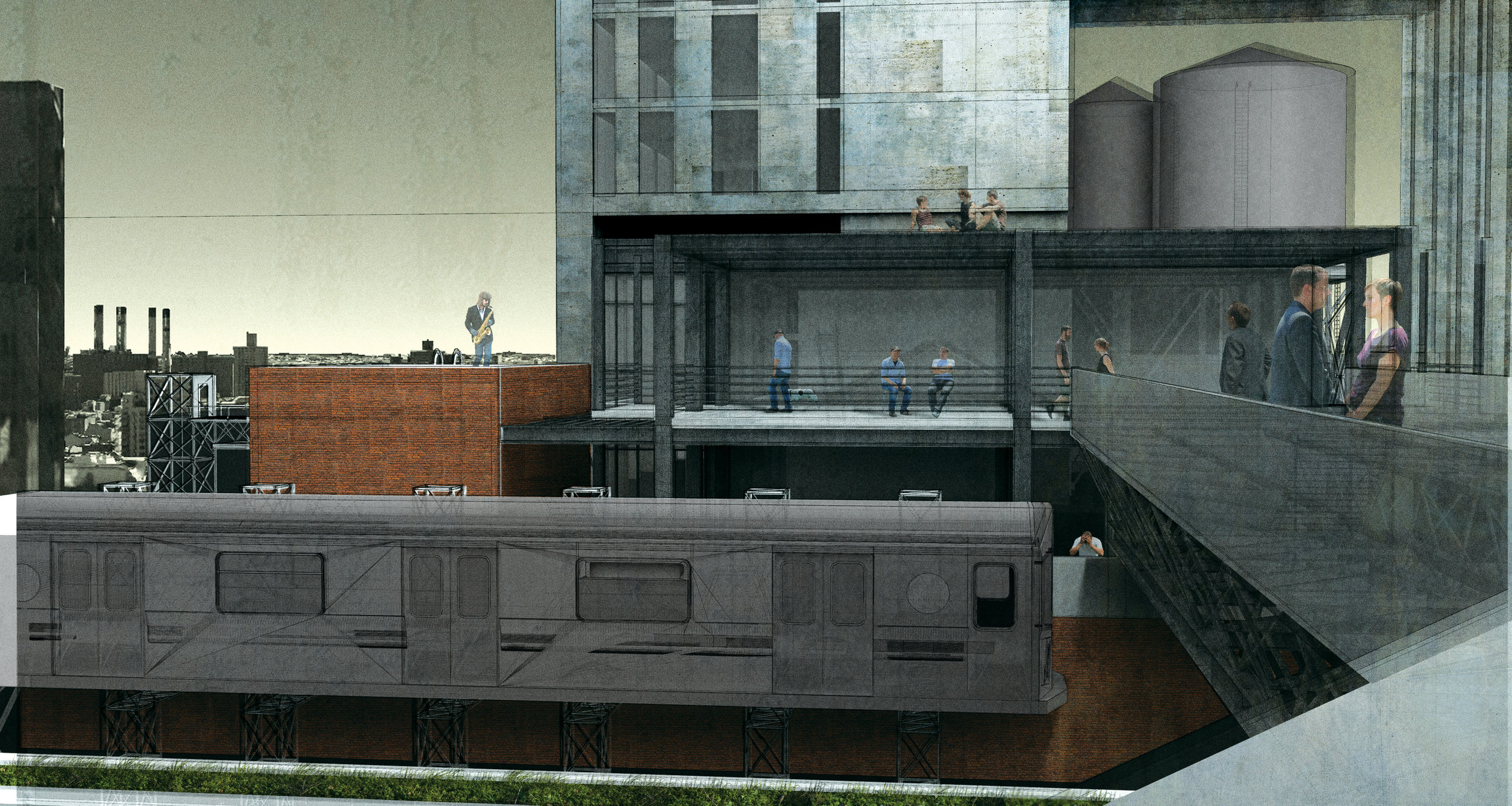Jacobs One
Pull the streets of New York upward. Have them penetrate structures, and rest on rooftops. Further weave the mesh of public, private, and the spaces between.
New York City can be viewed as having four levels: the subway, the street, the building, and the rooftop. The public realm predominantly exists at the levels of subway and street; all else, essentially all that is above ground, is occupied by the private realm. As cities grow taller, this separation grows more obsolete. Jane Jacobs warns of over-isolation of private spaces, removing city inhabitants from community responsibilities and regular interactions with one’s neighbor. Though her diagrams discussed this issue in plan, this thesis proposes that it can also be understood in section. As the city continues to grow in height, extending the reach of the private realm, it would only make sense to extend the public realm with it.
Rooftops exist as gray zones, not quite public and not quite private. Though technically the majority are private spaces, many hold key characteristics of public spaces: acting as a destination, a place to linger, the ability to people-watch, and chance encounters. This observation beckons the question: what if rooftops of a city were a part of the public realm? By enabling open access to rooftops and movement between them a new multi-leveled series of public spaces is created. Through utilizing strategies of constructing on top of existing structures, this multi-leveled series of public spaces can also take on multiple programs, and thus becomes multi-purposed (circulation and inhabitation), a fundamental characteristic of the street.
In a series of trials, strategies of creating the Hyperstreet, public access to and connectivity between rooftops of New York City, are explored.

